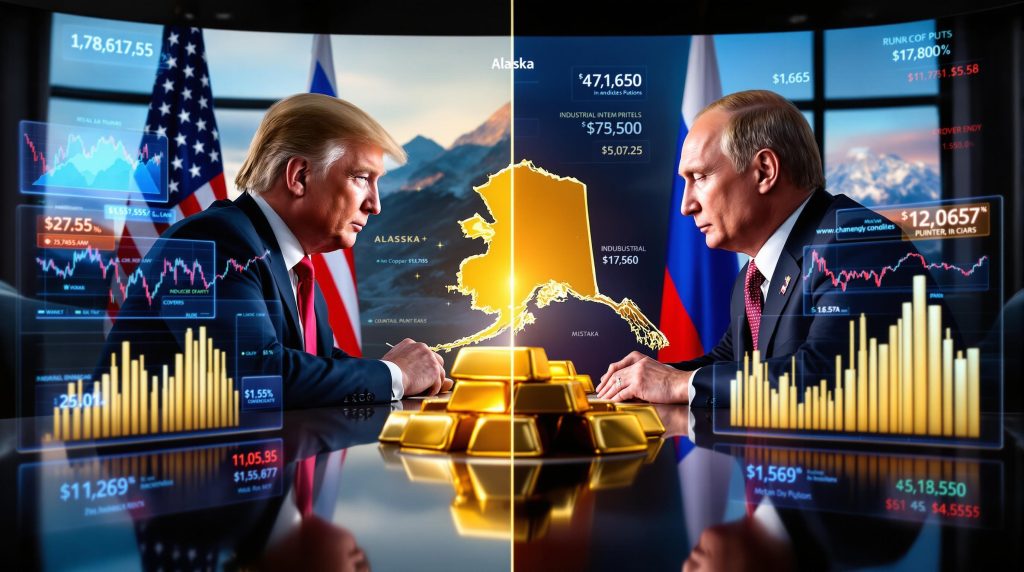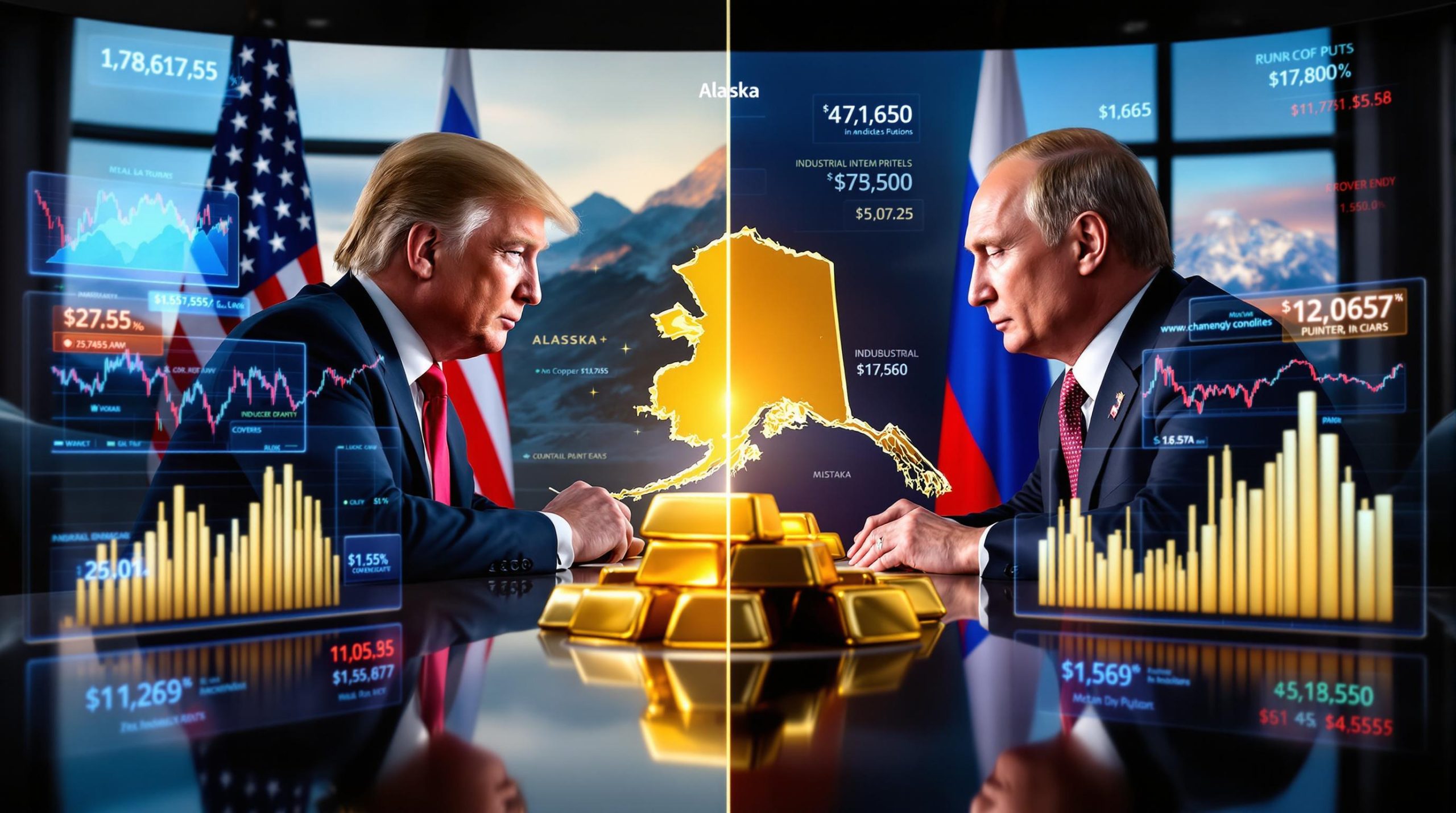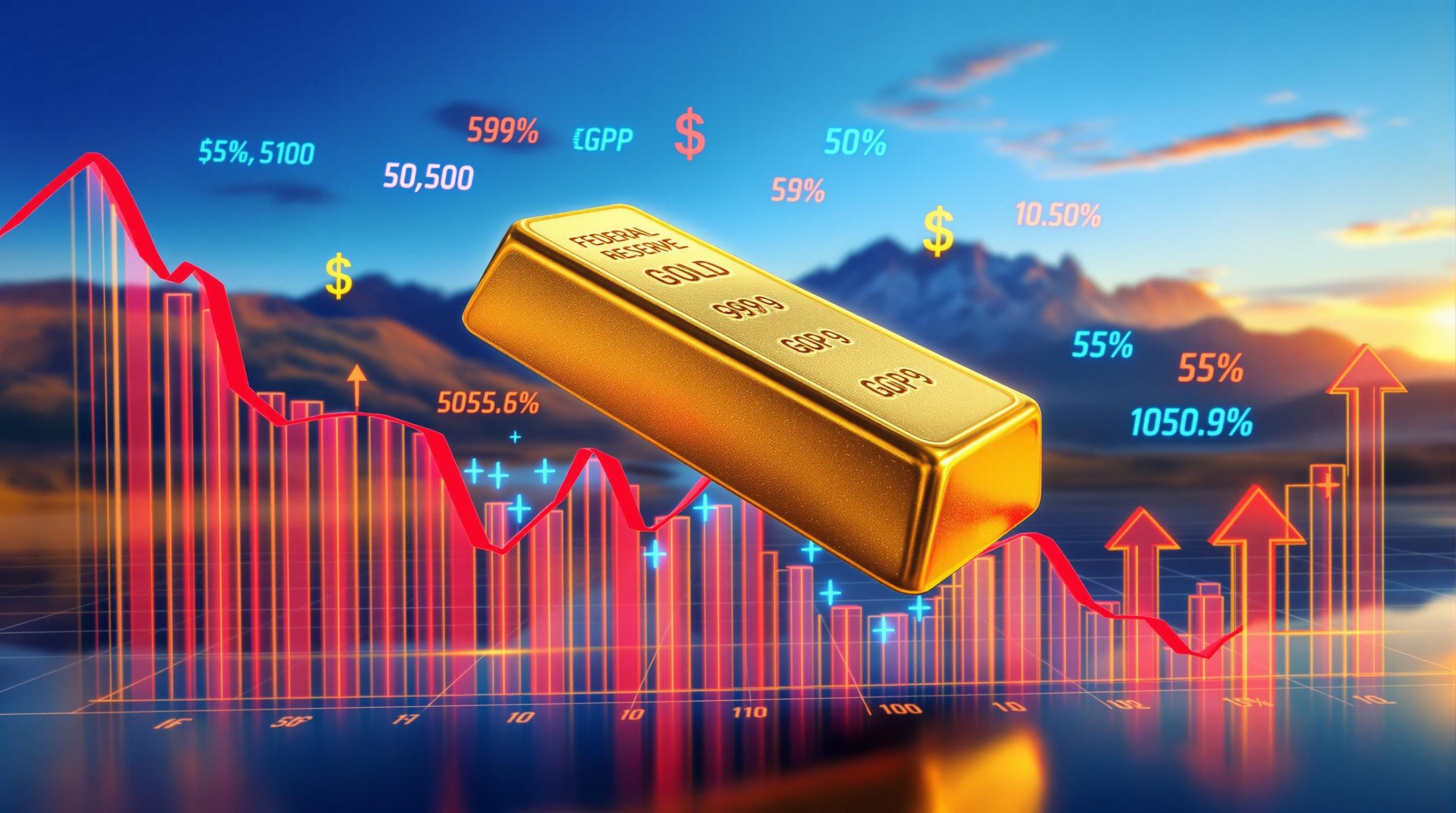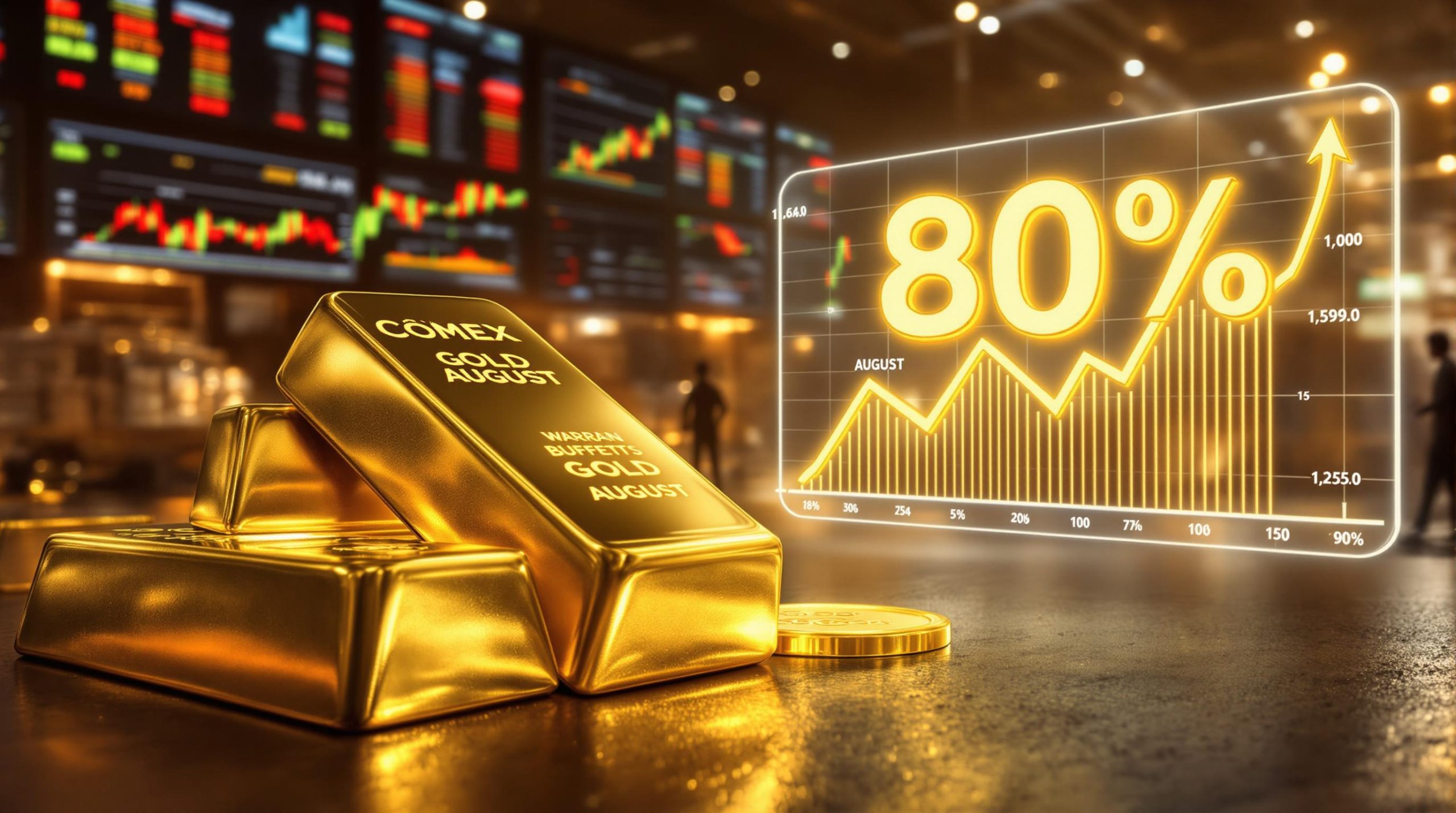Metal Markets Hold Steady as Trump-Putin Meeting Begins in Alaska
Global metal markets are displaying remarkable stability as a highly anticipated diplomatic meeting commences between two of the world's most influential leaders. Investors across commodity markets are adopting a cautious stance, carefully monitoring potential outcomes that could reshape global trade patterns and metal flows in the coming months.
Current Market Sentiment and Price Movements
Precious metals markets are showing resilience amid the geopolitical uncertainty, with gold prices analysis indicating that the yellow metal is holding near $2,400 per ounce after reaching record highs earlier this year. Gold continues to serve as a traditional safe haven during periods of international tension, though prices have stabilized as investors await concrete outcomes from the high-level talks.
"Market participants are essentially in a holding pattern right now," explains commodities analyst Maria Chen. "There's a clear reluctance to take significant positions in either direction until we have more clarity on potential policy shifts that could affect global trade flows."
Copper, often viewed as a barometer of global economic health, has edged up 0.1% to $9,773.50 per ton on the London Metal Exchange, reflecting cautious optimism about potential improvements in international trade relations. Recent copper pricing insights suggest the industrial metal could see further gains depending on diplomatic outcomes. Other industrial metals are displaying mixed performance:
- Aluminum futures at $2,548.25 per ton, down 0.39%
- Nickel trading with limited volatility around $17,800 per ton
- Zinc maintaining steady pricing around $2,900 per ton
- Lead showing modest gains of 0.3% to $2,150 per ton
Silver, platinum, and palladium have experienced slight declines, with palladium notably dropping 3.01% to $1,117.8 per ounce, continuing its challenging performance this year amid shifting automotive catalyst demand.
Key Economic Indicators Influencing Metal Markets
Recent economic data provides a complex backdrop for metal markets. U.S. retail sales showed a broad-based advance last month, primarily boosted by automobile sales, indicating resilient consumer demand despite persistent inflation concerns.
However, consumer sentiment unexpectedly fell for the first time since April, suggesting potential economic headwinds that could impact industrial metal demand. Inflation expectations have also risen according to the latest economic reports, potentially influencing central bank policy decisions that typically affect precious metals prices.
Energy markets are reacting to the geopolitical situation as well, with Brent crude down 1.42% to $65.85 per barrel and natural gas showing surprising strength at $2.916 per BTU, up 2.32%. These energy price movements have significant implications for mining operations and metal production costs worldwide.
Geopolitical Implications for Commodity Markets
The ongoing diplomatic meeting carries substantial implications for global metal markets, particularly given the significant role both nations play in worldwide commodity production and consumption. Any potential agreements could reshape trade flows that have been altered by years of complex international relations.
A possible modification of existing trade policies could significantly impact Russia's industrial metal exports. As one of the world's largest producers of nickel, aluminum, palladium, and platinum, any change in Russia's ability to access global markets would have far-reaching effects on supply chains and pricing.
Industry expert Thomas Reynolds notes: "The global metals industry has already undergone dramatic restructuring over the past several years. Any significant policy shifts resulting from this meeting could trigger another wave of supply chain reconfiguration, affecting everything from procurement strategies to pricing models."
Several potential scenarios could emerge from the talks:
- Normalized trade relations could increase global metal supply and potentially moderate prices
- Continued trade restrictions might maintain current market segmentation and price disparities
- Partial policy adjustments could create complex new trading patterns with varying effects across different metals
- Increased resource diplomacy might emerge, with mineral access being used as a diplomatic tool
Gold Market Dynamics and Future Scenarios
Gold markets have demonstrated remarkable resilience throughout recent geopolitical tensions, with prices gaining significant ground since 2022. The precious metal's traditional role as a safe-haven asset has been reinforced during periods of heightened uncertainty.
Current gold price stability reflects the market's careful wait-and-see approach to the diplomatic talks. Investors recognize that different outcomes could trigger opposing market reactions:
- Positive diplomatic progress could potentially ease gold's haven demand
- Deterioration in relations might trigger further flight to safety
- Central bank purchasing continues to provide underlying support regardless of diplomatic outcomes
- Inflation concerns remain a key driver of investment demand
Gold's role as a reserve asset has strengthened during recent years of geopolitical uncertainty. Central banks globally have increased their gold reserves, with purchases reaching record levels as institutions seek to diversify away from traditional currency holdings.
Industrial Metals Outlook and Supply Considerations
Industrial metals present a particularly interesting case study in how geopolitical developments can impact commodity markets. Copper and other base metals appear poised for potential gains if global trade tensions ease and normal commercial relationships resume.
The European manufacturing sector, which has faced significant challenges due to energy security concerns and supply chain disruptions, could benefit substantially from improved international relations. This would likely support demand for industrial metals used in manufacturing and infrastructure development.
Supply chain reconfiguration remains a key theme across industrial metal markets. Many manufacturers have invested heavily in developing alternative supply sources and more resilient procurement strategies. These structural changes could moderate the immediate market impact of diplomatic developments.
Key factors affecting industrial metal markets include:
- Production costs: Energy price volatility directly impacts smelting and refining economics
- Infrastructure spending: Government investment programs continue driving demand
- Green energy transition: Electrification and renewable energy expansion require substantial metal inputs
- Technological development: Advances in recycling and material efficiency affect long-term demand patterns
Critical Minerals in Focus
Beyond traditional industrial and precious metals, critical minerals energy transition has gained increased attention from policymakers and investors alike. These strategically important materials, essential for advanced technologies and the green energy transition, face unique supply challenges and geopolitical considerations.
Recent developments in the critical minerals sector continue independently of the diplomatic talks:
- Rare earth projects are advancing in various jurisdictions as nations seek to diversify supply
- American Rare Earths reported significant progress at its Halleck Creek project
- Antimony refining remains dominated by Chinese producers, who control over 70% of global production
- Thorium energy developments continue advancing at research facilities like Idaho National Laboratory
The critical minerals sector faces complex challenges including:
- Long development timelines for new mining projects
- Technical challenges in processing and refining
- Environmental considerations and regulatory requirements
- Concentrated supply chains vulnerable to disruption
Industry analyst Jennifer Parsons observes: "The critical minerals sector represents perhaps the most direct intersection of geology, geopolitics, and technological innovation. Nations increasingly view secure access to these materials as a strategic imperative rather than merely an economic consideration."
Furthermore, Trump's critical minerals order has added another dimension to this complex landscape, potentially reshaping supply chains and investment priorities.
Investment Implications and Market Monitoring
Investors focused on metal markets should monitor several key indicators following the diplomatic talks:
- Official statements from both sides regarding potential policy changes
- Specific mentions of sanctions modification or trade policy adjustments
- Market volatility patterns across different metal categories
- Supply chain responses from major consumers and producers
Potential investment implications extend across various sectors:
- Automotive manufacturers continue securing domestic steel supplies amid tariffs investment impact
- Mining companies with international operations could see valuation changes based on trade policy developments
- Haven assets may experience volatility as geopolitical risk assessments evolve
- Critical mineral producers face both opportunities and challenges in a shifting policy landscape
According to a recent Reuters report, gold markets are particularly sensitive to developments in these diplomatic talks, as investors carefully weigh potential outcomes.
Market Psychology and Trading Strategies
The current market environment highlights how trader psychology and positioning can sometimes override fundamental supply-demand factors during periods of geopolitical uncertainty. Many institutional investors have adopted defensive positioning ahead of the diplomatic talks, limiting exposure to potentially volatile metals.
Trading strategies currently being employed include:
- Pairs trading: Taking offsetting positions in correlated metals to benefit from relative price movements while minimizing directional risk
- Options strategies: Using derivatives to establish defined risk parameters during uncertain market conditions
- Technical trading: Focusing on price patterns and momentum rather than attempting to predict geopolitical outcomes
- Decreased position sizing: Reducing overall exposure until clearer market direction emerges
As detailed in Mining.com's analysis, metal markets hold steady as Trump-Putin meeting begins, with traders adopting a wait-and-see approach to potential policy developments.
Geological and Production Factors
The geological realities of metal production provide important context for understanding market dynamics. Different metals face vastly different extraction challenges and production economics:
- Concentration factors: Gold typically occurs at parts-per-million grades, requiring extensive processing
- By-product economics: Many critical minerals are produced as by-products of major metal mining
- Processing complexity: Different mineralogical characteristics require specialized extraction techniques
- Geographic distribution: Metal deposits are unevenly distributed globally, creating natural supply concentrations
These fundamental geological factors create natural constraints on how quickly supply can respond to geopolitical developments or price signals. Even if trade policies change overnight, developing new mines and processing facilities requires years of investment and development.
Conclusion: Navigating Uncertainty in Metal Markets
As the diplomatic talks unfold, metal markets demonstrate remarkable resilience amid uncertainty. Investors, producers, and consumers alike are watching closely for signals that might indicate future policy directions and their potential impact on global trade flows.
The complex interplay between geopolitics, economics, and geological realities means that metal markets will likely continue experiencing both challenges and opportunities in the coming months. Market participants must balance short-term volatility with long-term structural trends driving the sector.
For those involved in metal markets, maintaining flexibility and scenario planning will remain essential skills as they navigate this period of geopolitical and economic uncertainty. The outcomes of current diplomatic engagements may reshape metal trade patterns for years to come, creating both risks and opportunities across the sector.
Ready to Get Ahead of Major Mineral Discoveries?
Discover why successful traders gain an edge by receiving instant alerts on significant ASX mineral discoveries through Discovery Alert's proprietary Discovery IQ model, transforming complex data into actionable investment insights. Explore historic discoveries with exceptional returns by visiting our dedicated discoveries page and begin your 30-day free trial today.




